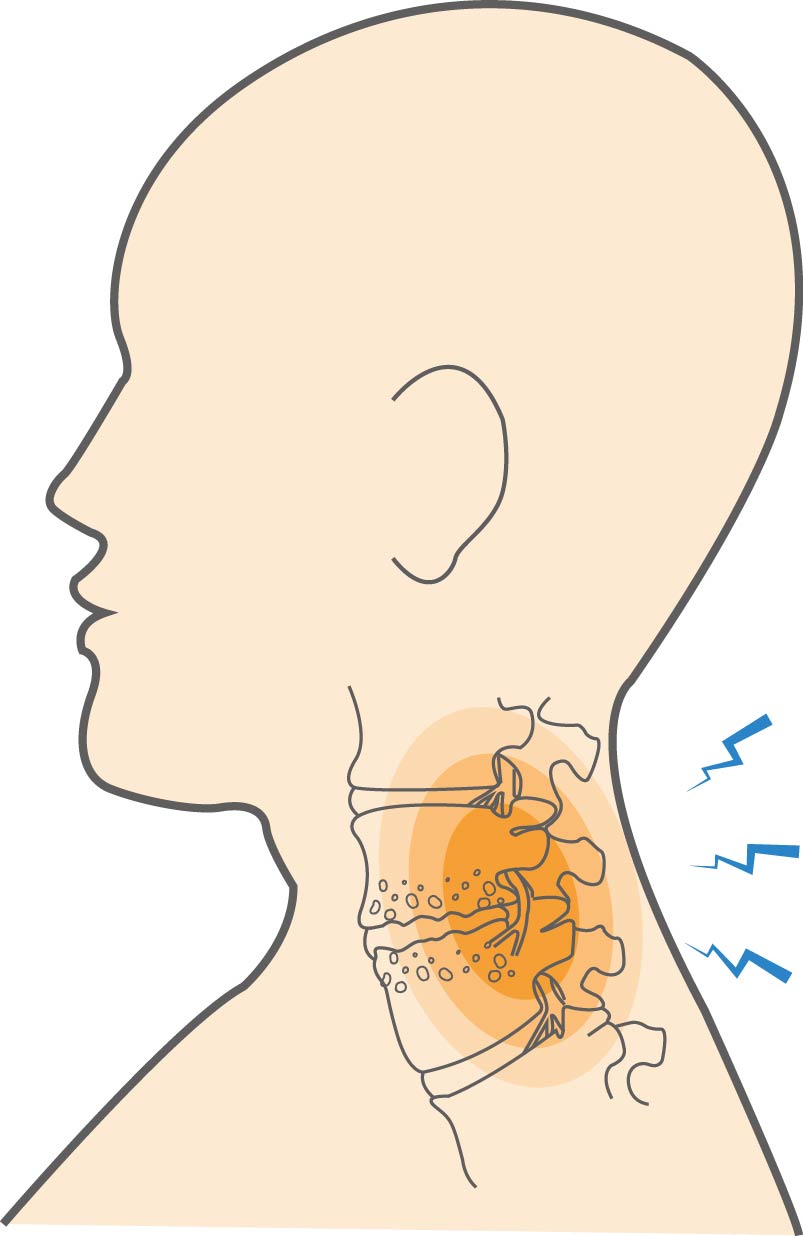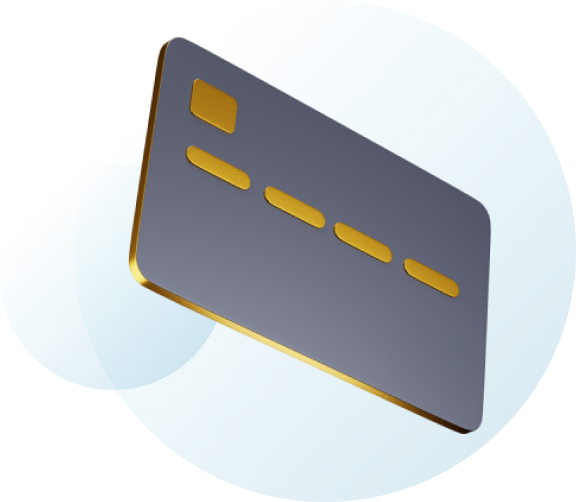Cervical Spinal Stenosis Causes, Symptoms & Treatment
Cervical spinal stenosis is a narrowing of the spinal canal in the neck, which puts pressure on the spinal cord and nerves. It can cause neck pain, numbness, weakness, and in severe cases balance problems. Common causes include aging, arthritis, and injury. Treatment ranges from physical therapy to surgery, depending on severity.
Start with our quick Symptom Assessment or connect directly with an Upswing Coach today.
Request an AppointmentReady to take the next step?
Start your symptom assessment or connect with a coach instantly.
Find Relief TodayOverview
Cervical spinal stenosis, also called neck stenosis, happens when the space inside the spinal canal in the neck becomes too narrow. This can put pressure on the nerves or on the spinal cord itself.
If the nerves are pinched, cervical radiculopathy occurs. It usually causes neck, shoulder, or arm pain, numbness, tingling, or weakness in one arm or hand.
If the narrowing presses on the spinal cord, it’s called cervical myelopathy. This can lead to balance problems, leg stiffness or weakness, and hand clumsiness.
Cervical spinal stenosis most commonly affects people over 50. While degenerative changes are the primary cause, younger individuals may develop the condition due to trauma, congenital spinal deformities such as scoliosis, or genetic disorders that affect bone and muscle development.

What causes Cervical Spinal Stenosis?
Cervical spinal stenosis can develop for several reasons, including:
- Arthritis (Most Commonly Osteoarthritis): Degeneration of joints in the spine leads to inflammation and bone thickening that narrows the spinal canal.
- Wear and Tear from Aging: Over time, natural changes in the spine, such as disc drying and joint stiffness, reduce the space around the spinal cord.
- Bone Spurs (Osteophytes): Extra bone growth forms as the spine tries to repair itself, which can press on the spinal cord or nerves.
- Injury or Trauma to the Cervical Spine: Sudden impact or repeated stress can damage spinal structures, leading to narrowing and nerve compression.
How the Injury Occurs: The condition often develops gradually due to age-related degeneration. Repeated pressure, poor posture, or high-impact movements can accelerate wear on the cervical spine, leading to narrowing and compression.
Common Everyday Causes: Cervical spinal stenosis can affect people who spend long hours working at a desk, frequently look down at their phones, or perform repetitive neck movements, such as mechanics, computer professionals, or musicians who maintain fixed head positions.
Long-term participation in high-impact or contact sports also increases the risk of cervical spine compression and injury:
- Football: Frequent tackles and head collisions can cause repetitive trauma to the neck, leading to disc or ligament damage.
- Ice Hockey: Sudden falls or hits against the boards can strain neck muscles and, over time, cause spinal cord compression.
- Rugby: Continuous scrums, tackles, and physical contact place significant pressure on the cervical spine, heightening the risk of stenosis.
- Wrestling: Repeated neck holds, slams, and joint strain can injure the cervical discs and joints, reducing spinal space.
Symptoms
Cervical spinal stenosis affects people in different ways. Some may not experience any noticeable symptoms, while others develop gradual signs that worsen over time as the spinal canal narrows.
Early symptoms often include:
- Neck stiffness, pain, or tingling: Discomfort or tightness in the neck that may spread to the shoulders.
- Numbness, tingling, or weakness: These sensations may appear in the arms, hands, legs, feet, or fingers, depending on which nerves are affected.
At first, these symptoms may be mild and occasional. However, as the condition progresses and pressure on the spinal cord increases(Cervical Myelopathy), more serious issues can develop, such as:
- Difficulty with balance and coordination: Feeling unsteady when walking or performing daily activities.
- Trouble walking: Stiffness or weakness in the legs can make movement more difficult.
- Loss of bladder or bowel control: In advanced cases, nerve compression can impair the body’s ability to regulate these functions.
Recognizing these symptoms early and seeking medical advice can help prevent further spinal cord damage and improve long-term outcomes.
When to see a doctor
If you experience ongoing neck pain, stiffness, or symptoms suggesting cervical spinal stenosis, such as tingling, numbness, or weakness in your arms, it is essential to schedule an appointment with an orthopedic specialist. Early evaluation can help identify the cause and prevent the condition from worsening. If you develop any loss of balance, weakness in your legs or loss of bowel or bladder control, you should see your doctor immediately.
During your visit, the doctor will review your medical history, including any recent neck injuries or existing conditions, such as arthritis or other inflammatory disorders that may affect the spine.
A physical examination will assess tenderness, range of motion, and neurological signs, such as weakness or loss of sensation in the arms and hands. Your doctor may also perform Spurling’s gentle movement and pressure assessment test to identify cervical nerve pain or irritation caused by nerve root compression.
To confirm the diagnosis and determine the extent of spinal canal narrowing in the neck, your doctor may recommend imaging studies, such as:
- X-rays – to view changes in bone structure, alignment, or the presence of bone spurs.
- MRI (Magnetic Resonance Imaging) – to get a detailed view of the spinal cord, discs, and soft tissues to determine compression’s exact location and severity.
Prompt evaluation and diagnosis can help your doctor develop an effective treatment plan to relieve pain, prevent nerve damage, and improve your quality of life.
Non-operative treatment
Cervical spinal stenosis in the neck that causes mild or moderate symptoms is often treated with conservative, non-operative methods, including:
- Wearing a neck collar: Provides support and allows the neck to heal.
- Non-steroidal anti-inflammatory drugs (NSAIDs): Medications like ibuprofen and naproxen help relieve pain.
- Physical therapy: People with spinal stenosis may lower their activity levels to reduce pain, but this can lead to muscle weakness and further discomfort. A physical therapist can teach exercises that:
- Build strength and endurance
- Maintain the flexibility and stability of the spine
- Improve balance
Alternative treatments may also help manage spinal stenosis pain, including:
- Massage therapy
- Chiropractic treatment
- Acupuncture
Try these exercises to help address your condition:
Below is a PDF of the Exercise Program
Surgical Treatment
If symptoms do not improve with conservative treatments or continue to worsen, your doctor may recommend surgical intervention. Surgery for cervical spinal stenosis usually has two main goals:
- Decompression – to make more space for the spinal cord and nerves
- Stabilization – to keep the spine strong and properly aligned after decompression
Examples of surgical procedures to treat cervical spinal stenosis include:
Laminectomy (Decompression Surgery)
In this procedure, the lamina, the back part of the vertebra, is removed to create more space in the spinal canal. It’s often used for moderate to severe stenosis that presses on the spinal cord. If removing bone makes the spine unstable, the surgeon may perform a spinal fusion at the same time.
Laminotomy
Only a small portion of the lamina is removed to relieve pressure on a specific nerve root, usually on one side. This is typically done when symptoms affect only one arm or side of the body.
Laminoplasty
Used mainly in the neck (cervical spine), this procedure hinges open one side of the lamina, like opening a door, and holds it open with a small metal plate or spacer. This widens the spinal canal and relieves pressure on the spinal cord while keeping most of the bone in place.
Spinal Fusion
Spinal fusion stabilizes the spine when it becomes or could become unstable after decompression surgery. The surgeon places bone grafts (sometimes with metal plates, rods, or screws) between two or more vertebrae so they heal together as one solid bone.
Recovery
The time it takes to experience relief from cervical spinal stenosis symptoms depends on the underlying cause and the treatment required. Since there is no cure for spinal stenosis, treatment focuses on managing symptoms. Patients who respond to conservative treatments may notice improvement within a few weeks.
Complete recovery from cervical decompression and fusion surgery can take three to six months. Typically, patients stay in the hospital for two to four nights following the procedure. A follow-up appointment is usually scheduled about two weeks after surgery to monitor healing progress.
Following all post-operative instructions is essential for proper recovery. Your doctor will advise when to begin light activities, such as walking, and when to start physical therapy to strengthen the muscles surrounding the spine.
Dr. Jay Kimmel is a board-certified orthopedic surgeon specializing in sports medicine, arthroscopic surgery, and shoulder and knee disorders. He completed his orthopedic training at New York-Presbyterian/Columbia University Medical Center and a Sports Medicine Fellowship at Temple University.
Dr. Kimmel previously served as the Director of the Connecticut Sports Medicine Institute at Saint Francis Hospital and has held faculty appointments as Clinical Assistant Professor in the Departments of Orthopedics and Family Medicine at the University of Connecticut. He has extensive experience caring for athletes as a team physician for high school and collegiate programs and continues to teach in the athletic training departments at Westfield State University and Springfield College.
Find the Support You Need — Right When You Need It
Whether you’re managing pain for the first time, need ongoing guidance, or require expert medical care, we’re here to help you every step of the way.
ORTHO DIRECT
Video visit with an orthopedic doctor for advice and a care plan.
$30
/MonthMRI DIRECT
Fast, affordable MRI with orthopedic review. No insurance required.
$499
/MonthFrequently Asked Questions
Is cervical spinal stenosis the same as neck stenosis?
Yes, the terms cervical spinal stenosis and neck stenosis both refer to narrowing in the spinal canal of the neck region.
What causes cervical spinal stenosis?
It’s commonly caused by age-related degeneration, but can also result from trauma, herniated discs, or congenital conditions leading to spinal cord compression.
Can cervical spinal stenosis cause symptoms beyond the neck?
Yes, because of the spinal cord’s role, you may experience symptoms like arm weakness, arm tingling, and occasionally leg weakness or difficulty walking.
What treatments are available for cervical spinal stenosis?
Treatments range from physical therapy and medications to reduce inflammation and pain to surgery for relieving spinal cord compression in severe cases.

